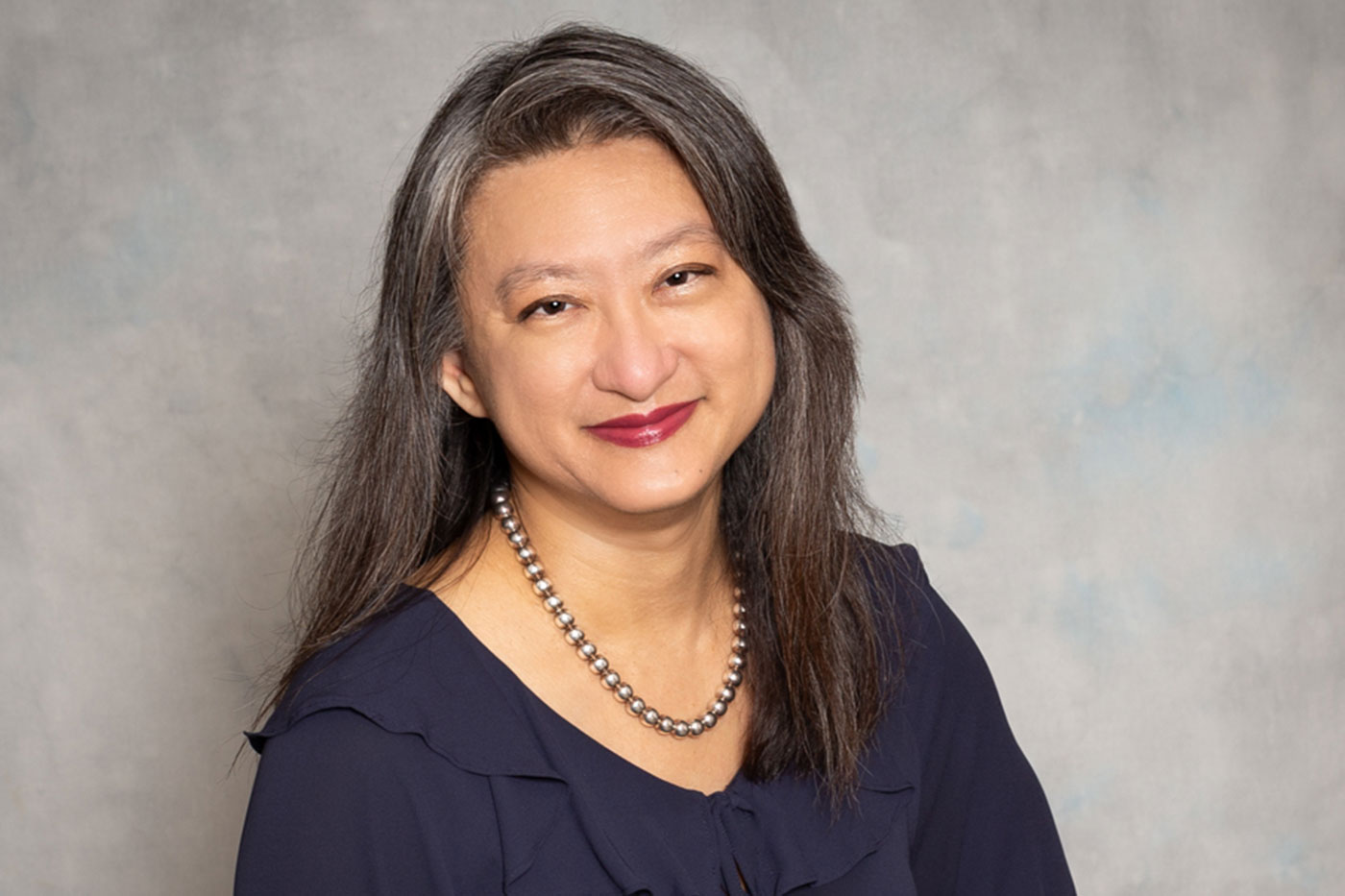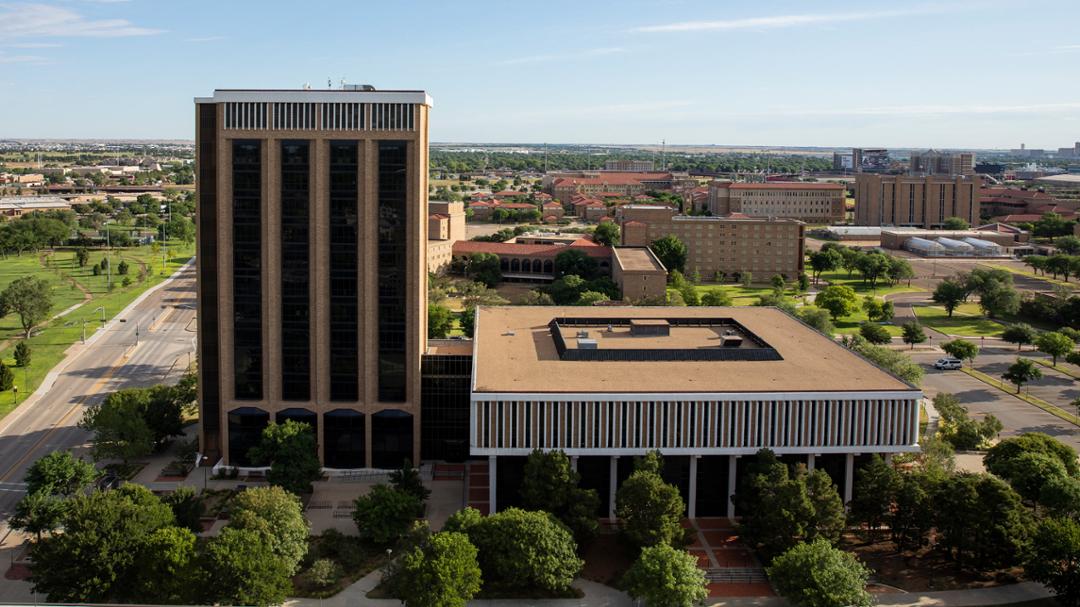The public relations practitioner and higher education administrator shares her passion for education, curiosity and leadership.
Bey-Ling Sha knew she was in the right place when she saw the words “prepare (students) for life-long learning.”
The phrase is in the mission statement for Texas Tech University’s College of Media & Communication.
Sha grew up in Alief, part of the Houston metro area, in a Chinese American household that had immigrated from Taiwan. She loved school and studied hard. She was academically inclined from the beginning, and teachers enjoyed having her in class because she did her homework and asked good questions.
“I was that Hermione Granger-like student who was very vested in having the right answer,” Sha said. “My evolution has been going from someone who wanted to always have the right answer to someone who wanted to ask better questions.”
It is this spirit of curiosity that will empower Sha as she leads the College of Media & Communication as its new dean.
Whether strange or serendipitous, Sha began her academic career in 2004, the same year the College of Media & Communication was elevated from a school to an academic college at Texas Tech.
In 2004, Sha became an assistant professor of public relations at San Diego State University. For the next 15 years, she leaned into every chance for professional growth, eventually serving as the director of San Diego State’s School of Journalism and Media Studies, and then as the acting associate dean of the College of Professional Studies and Fine Arts, before becoming dean of the College of Communications at California State University, Fullerton in 2019.
She finds herself continuously curious about the intersection of human identity and public relations. And while much of public relations is about public perception, Sha would argue that any worthwhile study of the subject must start with how we see ourselves. Before her academic career, Sha was a public affairs officer for the U.S. Census Bureau, where she gained an appreciation for how census data shape the ways that Americans see ourselves and how others see us.

When she was young, Sha saw herself becoming an archaeologist.
“I was a big fan of ‘Raiders of the Lost Ark’ at the time,” she laughed.
Like Indiana Jones, Sha imagined herself exploring the sands of far-flung deserts, searching for lost treasures. The same year that film premiered, Texas Tech hosted a gifted and talented summer camp for students from around Texas. Sha’s teachers suggested she go to the camp, a full eight hours from home.
It was her first time that far from her parents.
When she arrived in Lubbock, it truly did feel as though she were visiting some far-flung desert.
“I took an archaeology class, and we dug in the dirt for hours each day,” she recalled. “It was hot and dusty, and I found nothing.”
The second class she took was creative writing, and it was a pleasant turn of events for her. Not only because it was held in an air-conditioned classroom, but because she discovered gems on the page that she couldn’t find in the dust outside.
A decade later, she started college as an English major at Purdue University, and she may have continued that track if it had not been for reading “Beowulf” in Middle English.
“Beowulf is not exactly the kind of story I would have been interested in anyway, but then to read it in Middle English was additionally trying,” Sha said.
At the time, she had a friend whose father taught public relations at Purdue. She was eating at their home one night, recounting her boredom with the pointless violence between the mighty Beowulf and the monster Grendel, when the father suggested Sha might have a knack for public relations.
Sha said her first thought was, “I don’t always like people,” followed quickly with, “And I’m actually good at math.”
For these reasons, she’d never considered public relations. She said something to this effect to her friend’s father, who challenged her.
“Let’s talk about those stereotypes,” he said. “We have lots of people in public relations who are introverted. That’s perfectly fine. And we need people who can do math.”
Reframing the field in this way helped Sha reorient herself. Soon, she made the switch from English to communication, with an emphasis in public relations. Changing majors taught Sha, again, she might not have all the answers.
Sha explains that at its core, public relations is about building and maintaining relationships between an organization and the people who are impacted by the organization’s decisions. Focusing on relationships also encouraged her to overcome introversion to proactively connect with people.
There’s no doubt Sha will be able to tackle any public relations inquiries that may come her way at Texas Tech. The College of Media & Communication has many degree programs though, with Public Relations & Strategic Communication Management being one of seven. With a vast repository of communications skills and scholarly activity, Sha is poised to lead the entire college into a historic chapter.
One major dynamic of this historic chapter is the Texas University Fund (TUF).
“The Texas University Fund is an amazing investment by the taxpayers of the state of Texas to ramp up the reputation of Texas Tech in so many ways,” Sha said.
The TUF supports research activities at select Texas public universities. Texas voters passed the proposition in November 2023, providing a supplemental allotment of $44 million in funding to Texas Tech alone.
And while Sha is eager to observe and learn even more about the college before suggesting how funds might be used, she has some initial ideas that align with the priorities of the university.
“This fund allows us to attract cutting-edge researchers and faculty who are relatively new in their discipline, who are excited about their work and energetic about their projects, to really get them set up to pursue bigger external funding,” Sha said.
Sha likens TUF funding to planting seeds – if done well, this will be the start of preparing fruitful conditions for future faculty recruits and robust research projects that serve the community and the state.
She considers faculty recruitment and retention a priority as well.
“I think it’s important that we create an environment where people feel appreciated for what they contribute, supported in what they do, and significant in the sense of truly having the value of their work be understood,” she said.
Sha expressed a profound sense of gratitude and anticipation over arriving at Texas Tech during this confluence of opportunity. She said TUF, along with the university’s first comprehensive campaign, the college’s 20th anniversary, and the ongoing physical changes to campus, positions the College of Media & Communication to serve its students better than ever before.
Sha keeps an eye on the higher education landscape around the country, but she doesn’t feel other universities are necessarily what Texas Tech should measure itself against.
“What’s important to me is that the College of Media & Communication compares its current self to its previous self, and that we’re able to say our current self is well set up for a future self – that we always respond to the people and the place we’re serving in that particular moment in time,” she said.
She’s also asking questions about the enrollment cliff on the horizon for higher education.
“The cliff only exists if we’re only defining college students as the traditional 18- to 22-year-olds,” she said. “If we want to educate lifelong learners, we can’t assume who this audience is.”
Sha’s eyes lit up as she relayed other possibilities.
“What if we expanded our definition of who can be a college student?” she asked. “Only a third of the U.S. population has a college degree or higher. That means there are 200 million people who are potential customers for our educational product.
“I don’t see an enrollment cliff, although it’s definitely a different enrollment landscape. So, it all comes back to the question you ask.”
Sha believes the College of Media & Communication is uniquely set up to serve all kinds of students in the current landscape. The academic disciplines in the college lend themselves more easily to online course modalities, which has allowed the college to lead the way in online education and innovation at Texas Tech.
Sha is ready to fuel that momentum by expanding how all students – whether online or on campus, traditional or non-traditional – engage with faculty, staff and peers.
“I’m thrilled to return to a place that made such a large impression on me when I was a child,” Sha said. “And I can’t wait to share with the world – and especially with our alumni – the treasures we’re discovering and growing every day in the College of Media & Communication.”

